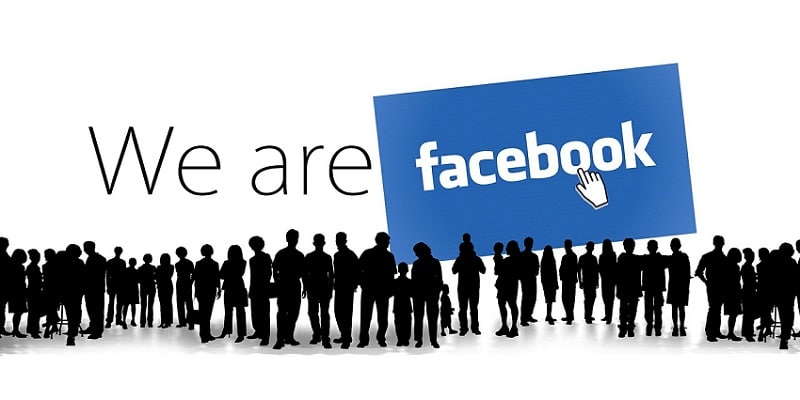Facebook’s Not Dead: 5 Ways to Use the Most Popular Social Media Platform

TechsPlace | Marketing to a user-base of 2.60 billion is not impossible but also not easy. People may think that Facebook is dead, but it’s far from it. What’s dead is old tactics that once used to thrive on the popular social media platform. Today, the platform has evolved, and new ways for brands to use the channel have evolved with it.
In this article, we’ll explore innovative ways you can use Facebook to engage with your audience, grow your brand awareness, and become a thought-leader for using the leading popular social media platform. We’ll take into account recent trends, Facebook’s growth strategies, and what we can expect to see on the platform in the future.
5 innovative ways to use Facebook
1. Venture into Augmented Reality
Facebook’s Spark AR Studio is one of the most popular AR tools available and one of the most powerful too. The popularity and growth of the Augmented Reality studio is only a hint at what’s to come on the platform.
Using AR is an incredible way for companies to build brand awareness and gamify their awareness strategy in the process. Plus, getting into AR has never been easier. Facebook provides a wealth of knowledge and tutorials for anyone to begin creating their AR effects. Plus, you’re now able to build this experience with or without knowing how to code.
Lastly, once you’ve published your effect, you’re able to track how well it’s doing with insights. This allows your brand to assign metrics alongside your brand to reach its efforts.
2. Invest in private messaging
Facebook has been adamant that the future of the platform is leaning towards a more private social media experience. CEO Zuckerberg is calling Facebook Messenger a “digital living room.” Of course, this has had brands quaking in their boots. What will that mean for marketing if people are turning towards 1-1 messaging rather than the newsfeed?
This just means brands need to adapt to the demand. We’re no longer crying out in town squares but reaching people on a more intimate level. Popularity in messenger bots is expected to grow, with 80% of businesses wanting to invest in them in 2020.
We’ve reached the point that chatbots are so advanced that they can do more than just pick up on keywords, but they can host real-time, lifelike conversations. What’s even better? There’s no limit to how many conversations they can have going at any one time. It’s one-to-one engagement at scale.
However, a great chatbot is only as good as its creator, and brands need to have a content plan for their direct messaging efforts that’s just as detailed as their feed content plan.
Consider new ways you, or your chatbot, can engage with someone via direct messaging, Build a content plan that reflects your brand’s personality, and showcases all of the great content you’ve created.
Use quizzes in private messages
Quizzes can be a great thing to share via direct messages. For example, if you’re running an eCommerce business, a quiz can act as a personal shopper, helping someone find that perfect product for them or a friend.
Figure out a tone of voice, style, and quiz type that fits your brand best and then build a quiz that enhances the direct messaging experience and has the potential to drive sales with the quiz results.
3. Create Facebook specific stories
Brands are often just allowing their Instagram story efforts to showcase on Facebook as well. It’s time to stop that and to start creating stories that are specific for the channel. We’ll begin to see new features rolling out for Facebook stories’ capabilities in Facebook’s efforts to battle against TikTok.
Ben S, Callahan’s Director of Social and Emerging Media, attended Facebook’s F8 conference for developers and spoke of how he expects to see a replication of feed functionality in Facebook’s stories. We already see it with the company’s efforts on Instagram. However, we can expect the same from the Facebook platform soon.
Make sure your brand has built an audience that’s ready for stories on Facebook, so you’re not desperately trying to rally views when the inevitable focus on stories comes.
4. Micro matters
There’s a shift in where Facebook is visibly placing priorities. A focus on hyper-local, medium, small, and micro-enterprises – MSMEs – is already emerging and will continue to do so in the coming years. We’ll begin to see these MSMEs being given a larger voice than they’ve ever had before.
With the recent introductions of Facebook shops and talk of Facebook’s currency, Libra, set for the near future people and brands alike, will be championing the micro. From micro-business to micro-payments, people will be able to invest in smaller and for less.
How does this affect brands? Think small— target smaller audience groups, but more of them, with micro-influencers. Earlier I mentioned Zuckerburg is aiming to create the “digital living room,” let that notion lead your marketing efforts. Think small, personal, and comfortable.
3 Ways to work with micro-influencers on Facebook
- Create a video series
There’s still so much power in video content, and we’ll dive into this a little more in the last point. There are 8 billion daily video views on the platform. Find a micro-influencer that has video creation experience. Create a series that’s not only relevant to your demographic but is shareable.
At this point, it’s worth considering Facebook live. Facebook users spend 3x longer watching Facebook live than they would with standard upload content. That’s a huge increase and an easy win if you hand over the reins to a micro-influencer who is comfortable with live content.
- Work with group admins
Facebook groups are an exceptionally easy way to reach people on the platform, and they’re getting more specific by the day. Invest your time in identifying the perfect group for your company and then work with the group admins.
As an admin of a group, that person will hold more influence over the community. Find something mutually beneficial for your brand and the group community and create content that’s tailored for each campaign.
- Launch Facebook competitions
The low barrier of entry competitions is still an easy way to hit reach goals on Facebook. However, brands are still having a hard time at ranking on newsfeeds thanks to Facebook’s algorithm putting friends and family first.
What does this mean for your Facebook competition? Any competition that you launch should be launched in collaboration with Micro-Influencers. Use their community to help your reach metrics, use a hashtag to help you track post-performance, and rank on people’s newsfeeds by starting a human-led competition.
3 Benefits of working with micro-influencers
Considering everything discussed so far, we know micro-influencers are the way forward if we’re hoping to go as personal as Facebook aims to be. Yet, there’s a lot more benefit to working with micro-influencers than just aligning yourself with Facebook’s goals.
- Micro-Influencers appear genuine
There’s no doubt about it, micro-influencers get better engagement rates. They appear more genuine and less likely to be “bought” by a brand. They also appear more relatable, so people feel like they know them better than someone with a larger following.
- Micro-Influencers go above and beyond with their content efforts
This is not to say that Macro-Influencers do not put effort into their content creation, they do, or they wouldn’t be where they are today. However, a micro-influencer is more determined to reach success, and you can trust that you’ll get a great effort from them.
Plus, a micro-influencer is less likely to be working with other brands at the same time, so they’ll give your campaign more attention.
- Micro-Influencers often don’t have agents
It’s a well-known fact that Micro-Influencers cost less. Just like in other areas of digital marketing, you pay for the number of people you reach. However, with Micro-Influencers, you’re cutting out agencies as the middle-man. By doing so, you’re cutting down on your influencer marketing costs.
5. Long-form video
In fear of “displacing” the Facebook newsfeed’s original purpose of creating connections, the social media giant created a new tab called: Watch. The tab was aimed at giving those video viewers a portal in which they could still consume the copious amounts of video they wanted to but did not consume it on Facebook’s main news feed.
This year Facebook is upping the content budget for the Watch platform from $1 billion to $1.4 billion to build greater awareness around it. Much like Facebook stories, this is something we are yet to see emerge, but going on Facebook’s budgeting for 2020 and beyond it’s something we’re sure to see grow in the future.
What does this mean for brands? Although you may be seeing a little less long-form video on your newsfeed today, it doesn’t mean that it’s stopped. Video content has moved but is still within the Facebook app.
Continue working on that long-form video strategy, put a budget on working with content creators that your demographic are already following, and build some quality video that ranks top of the Facebook Watch feed.
Wrapping it all up
Yes, Facebook has faced some troubling numbers. We cannot hide their move to report on “family” metrics from here on in, which encompasses Facebook, Instagram, and Whatsapp. It’s a clear attempt to hide more startling numbers from the actual social media channel Facebook alone.
However, all is not lost for the channel, and the popular social media platform is far from dead. Efforts from Zuckerburg are being shifted, and he’s now looking at ten-year plans rather than annual plans. This can only be a good thing for the platform as we’ll see a more long-term, strategically led social media channel begin to emerge.
Brands need to stick with Facebook and be just as strategic as the CEO himself. Be innovative, lead with genuine connections in mind, and use the popular social media platform to help your business thrive… long term.
This article is contributed by guest author on techsplace.com.





